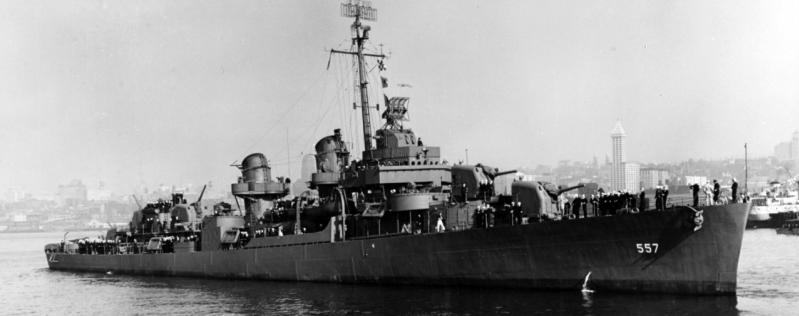 In November 2019, RV Petrel located the scattered wreckage of a World War II warship at a depth of 21,180 ft in the Philippine Sea. The wreck, thought to be the deepest wreck of a warship ever discovered, was suspected to be either of the USS Johnston or possibly the USS Hoel. On Thursday, the Navy and a team of undersea explorers announced that the wreck had been positively identified as the USS Johnston.
In November 2019, RV Petrel located the scattered wreckage of a World War II warship at a depth of 21,180 ft in the Philippine Sea. The wreck, thought to be the deepest wreck of a warship ever discovered, was suspected to be either of the USS Johnston or possibly the USS Hoel. On Thursday, the Navy and a team of undersea explorers announced that the wreck had been positively identified as the USS Johnston.
Late last month, a manned-submersible operated by Caladan Oceanic, a Dallas undersea exploration company, located the front two-thirds of the ship, sitting upright, along with the bridge, midsection, and the identifying hull number, 557.
USS Johnston was a Fletcher Class destroyer under the command of Ernest E. Evans at the Battle off Samar. The Johnston was among four destroyers and three destroyer escorts guarding six escort carriers of the Task Force 77.43, known by its call sign “Taffy Three.” On the morning of October 25, 1944, they were surprised by an overwhelming Japanese fleet of four battleships, eight cruisers, and at least twelve destroyers.
As recounted by the Naval History and Heritage Command:
Without waiting for orders, Evans gave the command to commence a torpedo run against the enemy. Johnston steered toward her target, an enemy cruiser, veering and fishtailing toward enemy shell splashes in the belief that “lightning doesn’t strike twice.” Evans closed to less than 10,000 yards before loosing a spread of torpedoes. Several of them blew the bow off the Japanese cruiser.
For more than three hours, Johnston engaged the enemy. Evans’s aggressiveness, along with that of other American destroyermen and aviators from Taffy Three, led the Japanese to believe they were facing a much larger force and caused them to turn away.
Evans was from Pawnee, Okla. His mother was Cherokee, and his father was half White and half Creek Indian. Despite the racism of the era, he was admitted to the Naval Academy and graduated in 1931. He was 36 at the time of the attack, and he had been the Johnston’s only skipper.
Of the Johnstone‘s crew of 327, only 141 survived. Commanding Officer Cmdr. Ernest Evans was awarded a posthumous Medal of Honor, the first Native American in the U.S. Navy and one of only two destroyer captains in WWII to be so honored.
